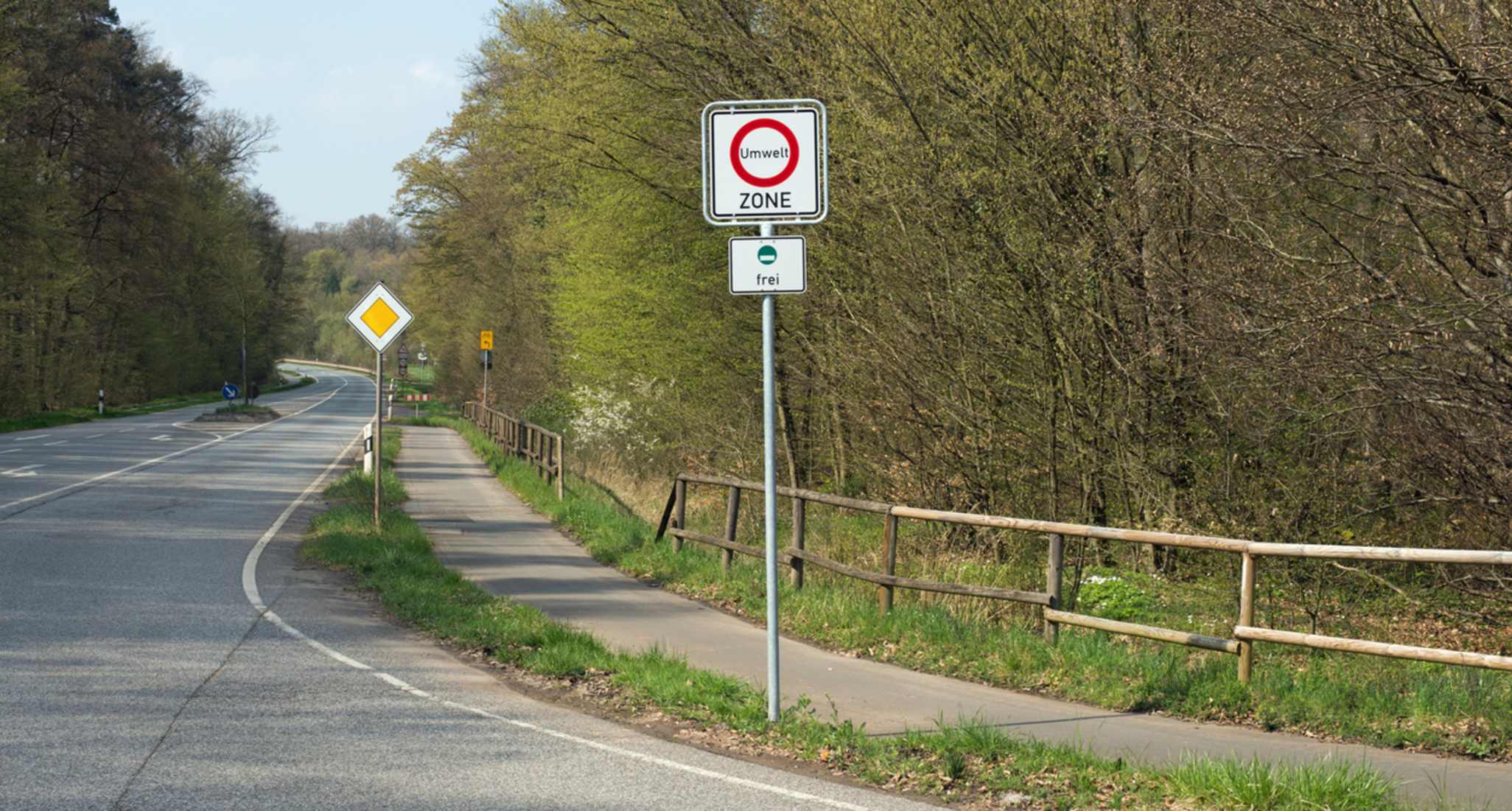Environmental badge in Germany: mandatory for Swiss drivers?
If you drive your car in Germany, you need a green environmental badge in environmental zones. Comparis explains.

23.10.2024

iStock/HarryHuber
1. What are low-emission zones in Germany?
Various German inner cities are fully or partially designated as “environmental zones”. This is intended to reduce fine dust pollution and thus protect people’s health.
And it works: numerous environmental zones have already been removed because the air quality improved.
2. What do motorists need to know about environmental zones?
In environmental zones, you must display a badge. You may only drive into the environmental zone if you display a valid green environmental badge on the windscreen of your car. Only vehicles that meet certain emission standards will receive this sticker.
3. What types of environmental badge are there?
In Germany, vehicles are divided into four pollutant groups. The lower the particulate matter emissions, the higher the class.
Important: currently, only vehicles with a green badge are allowed to enter an environmental zone. A yellow or red badge is not enough.
4. Which cities have environmental zones?
Many motorists are familiar with the Munich environmental zone. There are also many others. Currently, there are 39 zones (as of September 2024):
| State | Location |
|---|---|
| North Rhine-Westphalia | Aachen |
| Bavaria | Augsburg |
| Berlin | Berlin |
| North Rhine-Westphalia | Bonn |
| Bremen | Bremen |
| Hessen | Darmstadt |
| North Rhine-Westphalia | Dinslaken |
| North Rhine-Westphalia | Düsseldorf |
| North Rhine-Westphalia | Eschweiler |
| Hessen | Frankfurt a. M. |
| Baden-Württemberg | Freiburg |
| North Rhine-Westphalia | Hagen |
| Saxony-Anhalt | Halle (Saale) |
| North Rhine-Westphalia | Krefeld |
| North Rhine-Westphalia | Cologne |
| North Rhine-Westphalia | Langenfeld |
| Saxony | Leipzig |
| Hessen | Limburg an der Lahn |
| Baden-Württemberg | Ludwigsburg and surrounding area |
| Saxony-Anhalt | Magdeburg |
| Rhineland-Palatinate | Mainz |
| Hessen | Marburg |
| North Rhine-Westphalia | Mönchengladbach |
| Bavaria | Munich |
| North Rhine-Westphalia | Münster |
| North Rhine-Westphalia | Neuss |
| Hessen | Offenbach |
| Lower Saxony | Osnabrück |
| North Rhine-Westphalia | Overath |
| Baden-Württemberg | Pforzheim |
| Bavaria | Regensburg |
| North Rhine-Westphalia | Remscheid |
| North Rhine-Westphalia | Ruhr area |
| North Rhine-Westphalia | Siegen |
| Baden-Württemberg | Stuttgart |
| Hessen | Wiesbaden |
| North Rhine-Westphalia | Wuppertal |
Source: Federal Environment Agency
5. Which vehicles need an environmental badge?
The requirement generally applies to cars, buses and trucks. Electric cars also need an environmental badge.
Motorcycles, three-wheeled vehicles, agricultural and forestry tractors, work machines, mobile machines and equipment, classic cars, vehicles for the disabled and vehicles with special rights (e.g. rescue services) are excluded.
6. Where can I buy an environmental badge?
You can get the badge, for example, from TCS. Vehicles with Swiss licence plates can order the green particulate matter or environmental badge at the Touringshop or at most TCS contact points.
Price for TCS members: 12 francs
Non-members: 24 francs
You will need your vehicle registration document to place your order. After payment, you usually receive the badge in the mail within about ten working days.
Where can I buy the environmental badge in Germany?
You can purchase the green badge in Germany at selected petrol stations, at car repair shops or at the TÜV in Germany. Upon presentation of the registration certificate, you will receive the appropriate badge and can affix it directly. Find out in advance where exactly the badge is available.
Are you looking for an environmentally friendly car?
At Comparis, you can find the listings of the major Swiss car marketplaces at a glance.
7. FAQs about the environmental badge
Anyone who drives a car into an environmental zone without a valid green environmental badge should expect a fine of 100 euros.
Yes, the regulation also applies to foreign vehicles – and thus also to cars from Switzerland.
First, clean the inside of the windshield on the passenger side. Then remove the protective film and stick the badge at the bottom of the windshield so that it adheres firmly and is clearly visible.
The badge is valid indefinitely. However, you must purchase a new badge when you have a new vehicle or licence plates.
This article was first published on 09.05.2018




